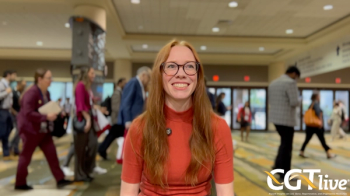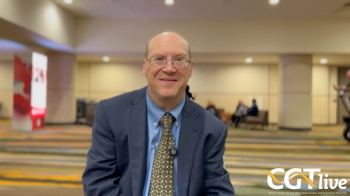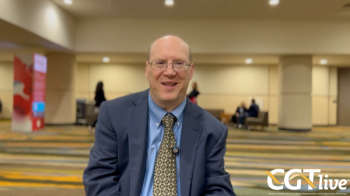
Early-Stage Lung Cancer: Trial Compares Radiosurgery to Standard Surgery
Stereotactic body radiation therapy is being compared to standard surgery in a phase III trial in high-risk operable patients with early-stage non–small-cell lung cancer.
Stereotactic body radiation therapy (SBRT) is a nonoperative technique that has been established as an effective, and low toxicity technique for treating cancer for patients for whom surgery is not an option. The technique is now being compared to standard surgery in a phase III trial in high-risk operable patients with early-stage non–small-cell lung cancer (NSCLC). The American College of Surgeons Oncology Group and the Radiation Therapy and Oncology Group are running the trial to directly compare SBRT and sublobar resection for high-risk operable patients to define the role of each in treating early-stage NSCLC.
“This trial is exciting as this has a real potential to change the standard of care for a group of patients with lung cancer,” said Hiran C. Fernando, MD, associate professor of surgery at Boston University School of Medicine and co-chair of the study.
The primary objective of the trial is to determine whether for patients treated with SBRT, 3-year survival rates are no more than 10% less than the rate of patients treated with standard surgery. Over a 5-year period, 420 patients will be recruited-55 have already been recruited as of September.
In 2012, an estimated 226,160 people will be diagnosed with lung cancer in the United States, and about 160,340 patients will die from the disease. Most lung cancer is diagnosed at an advanced stage. For those patients who are diagnosed with lung cancer early, “our standard operation for lung cancer is a lobectomy, where we remove the lobe of lung containing the cancer,” said Fernando. The high-risk patients are able to tolerate an operation and anaesthetic but can only tolerate a sublobar resection, or removal of part of a lobe, not a full lobectomy, said Fernando.
“The results of SBRT for medically inoperable patients has been excellent, and so we are comparing sublobar resection to SBRT for the high-risk inoperable group of patients who have stage I lung cancer,” said Fernando.
SBRT Vs Surgery
Unlike external beam radiation used on inoperable patients, which results in radiation exposure of normal tissue during the procedure, SBRT focuses the radiation using computer systems, minimizing radiation exposure to the surrounding tissue. Because SBRT can deliver radiation to a focused area, the radiation can be of higher intensity making tumor-cell killing much more likely.
“The problem with this technique is that we are not treating hidden tumor spread that may be present in surrounding lymph nodes or in areas of the lung more than a couple of centimeters from the cancer,” said Fernando. Another issue is cost. While both academic and community centers are using the technology, the SBRT machines cost about $2 million, according to Fernando.
Could SBRT replace surgery for all early-stage lung cancer, including good-risk patients, in the future? Fernando believes this is unlikely. “There are oncological benefits in doing an operation, the tumor is completely removed unlike with SBRT where there is often a scar left behind. Sometimes it is difficult to know if there is viable cancer in the scar or whether this is all dead tissue,” said Fernando. Surgery removes more of the surrounding tissue that may contain tumor cells not detected by imaging.
For high-risk patients, SBRT may have clear advantages: the procedure is lower risk and likely has lower rates of complications compared to invasive surgery. Fernando predicts that quality of life and recovery will be better with SBRT. “There may be subgroups of patients who are better treated with operation or with SBRT and we hope to tease this information out from this study.”
Challenges
Writing in the Journal of Thoracic and Cardiovascular Surgery, Fernando and co-chair Robert D. Timmerman, MD, department of radiation oncology at the Harold C. Simmons Comprehensive Cancer Center in Dallas, Texas, highlighted the difficulties of such a direct comparison-different definitions of recurrence, different patient population types, different ways of classifying morbidity, and different imaging follow-up procedures. “The randomized study is necessary and timely,” state the authors. Fernando also said accrual will likely pose a challenge, as patients will face randomization to either an invasive or a less invasive technique.
Other new treatment options are available or are in development including cryoablation, radiofrequency ablation, and irreversible electroporation. “Patients with early-stage lung cancers should not be denied treatment simply because they are felt to be high risk,” said Fernando. “In many cases treatment can be successful and result in preserved quality of life.”
Newsletter
Stay at the forefront of cutting-edge science with CGT—your direct line to expert insights, breakthrough data, and real-time coverage of the latest advancements in cell and gene therapy.

















































